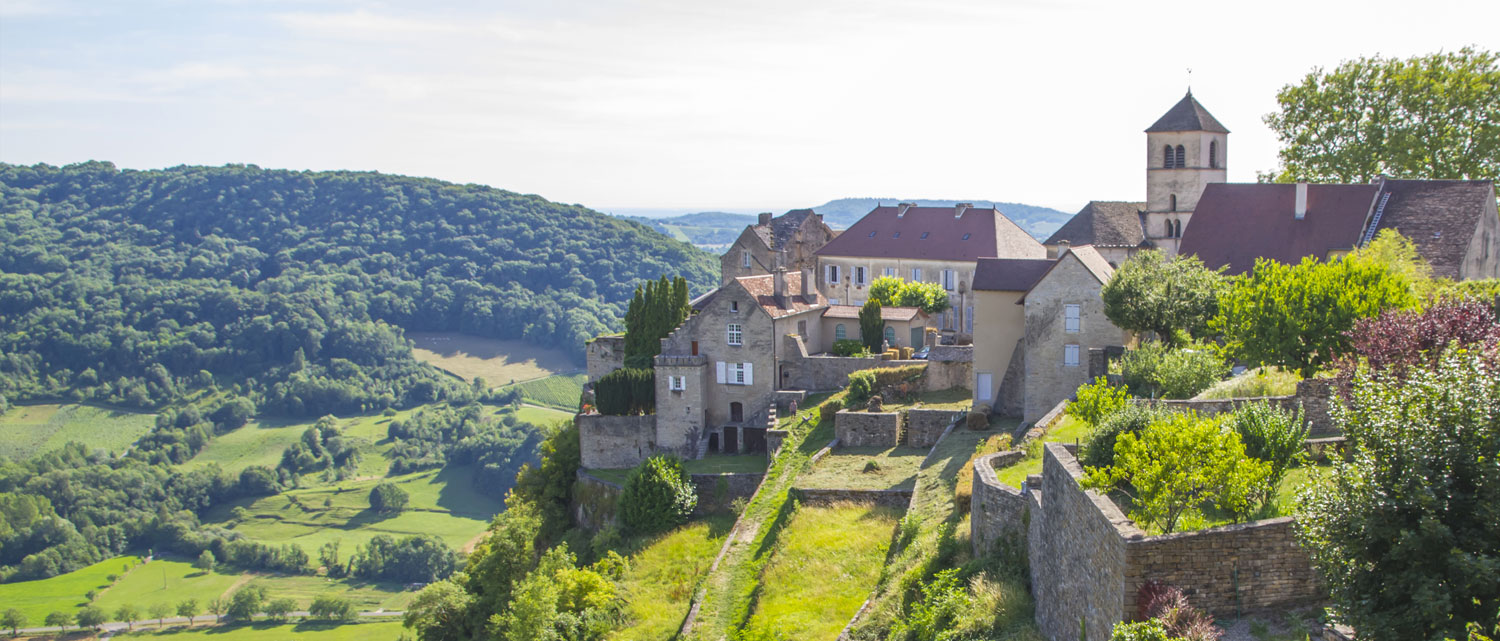
It is therefore perhaps little surprise to find that knowledge of its wines is not widespread, even within France itself. However, as so often small is beautiful and here is another example of where a little perseverance can be very rewarding. Today the region and its wines are enjoying a moment in the international spotlight.
Visitors to the region will know that the Jura is a very beautiful and very traditionally rural area. Tucked away on France’s eastern border, it is a land of rolling hills, forests and lush grazing, with its prized dairy herds producing the raw ingredient for its famed cheeses such as Comté.
Its vineyards are found on the lower foothills of the western slopes of the Jura mountains, typically between 200m and 450m of elevation and are only one hour by car across the Saône river from Burgundy. There is industry in larger towns such as Besançon but by and large the pace of life here is slow and pastoral. As you move further east towards the Swiss border, the Jura mountains take over and the scenery is more dramatic.
Despite the proximity to Burgundy, conditions are very different. There is, on average, double the amount of rainfall in the Jura as the prevailing westerly winds pushing the clouds across France tend to dump their cargo before being forced upwards over the mountains. This can lead to substantial difficulties in carrying out vineyard work.
It is a temperate-continental climate where it is rare to find extreme high peaks of temperature in the summer. The soils are different too: while clay and limestone also feature, it is the marls (of varying geological ages) that are a defining feature here. As the Alps formed, they pushed the older Jura mountains westwards towards the Bresse plain, bringing old sedimentary rock to the surface. Over millennia, the process of erosion by wind and water on these soils has continued to bring further complexity to the mix.
There are further contrasts in the aspect of the vineyards. While the Côte d’Or is a fairly consistent escarpment that runs north-south, with its major vineyards exposed towards the east and south-east, in the Jura vineyards can be found on all points of the compass but particularly facing west and nearly always interspersed with other agricultural activity rather than the monoculture found in Burgundy.
Despite its small size, there is remarkable variety in the wines. There are five major grape varieties grown and all of the wine styles can be found from dry to sweet, white to red via orange and pink, in both oxidative and non-oxidative styles and not forgetting sparkling and fortified expressions either. The food is also some of the best in France. In addition to the cheese, the charcuterie is of high renown, the fruit is excellent, there are very good river and lake fish, an array of game, wild mushrooms and much else besides. Michelin stars shine out from many towns.
The region has a fascinating history, with many famous characters and stories and the wines have thus shared the billing with an array of other cultural elements rather than being a dominant narrative. The 1850s were very much ‘peak wine’ but once again the effects of wars, vine disease, industrialisation and phylloxera saw viticulture go into sharp decline. Many people simply left the hillside villages and headed elsewhere, the typical small-holding being insufficient to survive on.
Those that stayed were inevitably the most committed and those with the best vineyard land. The small production has been happily consumed in the region and its immediate surrounds, perfectly adapted to accompany the famous cuisine. However, in the 21st century, a new wave of consumers, seeking something different, authentic and perhaps a little quirky have changed the dynamic. Seeing these wines turn up in a trendy restaurants in places like New York has been an unexpected phenomenon. With this new interest from the outside world, it will be fascinating to watch the development of this proud region in the years to come.